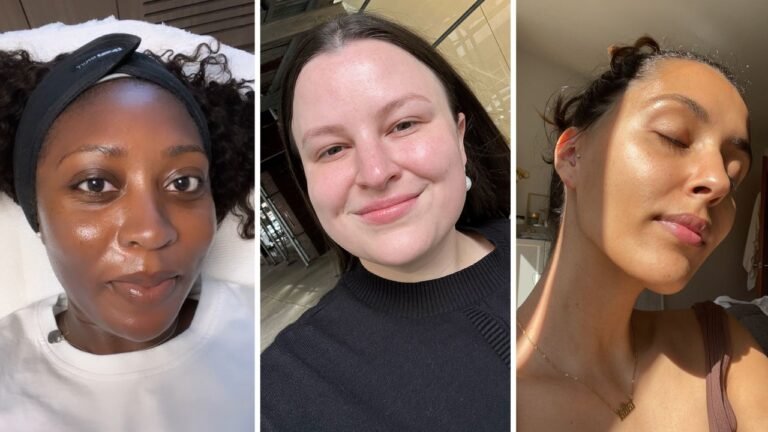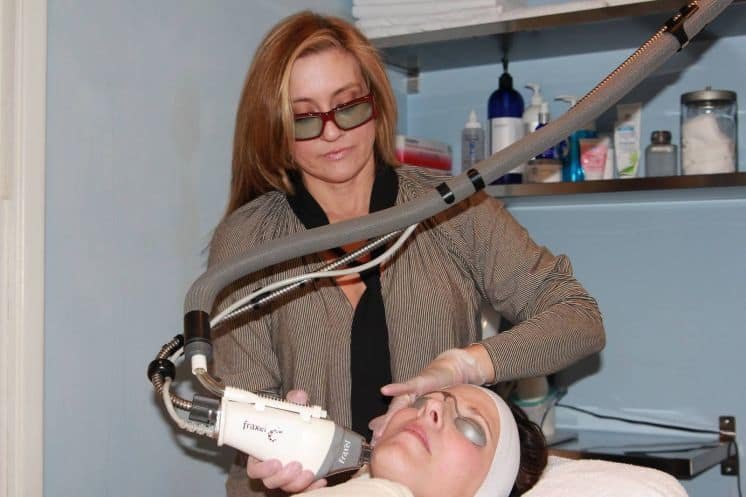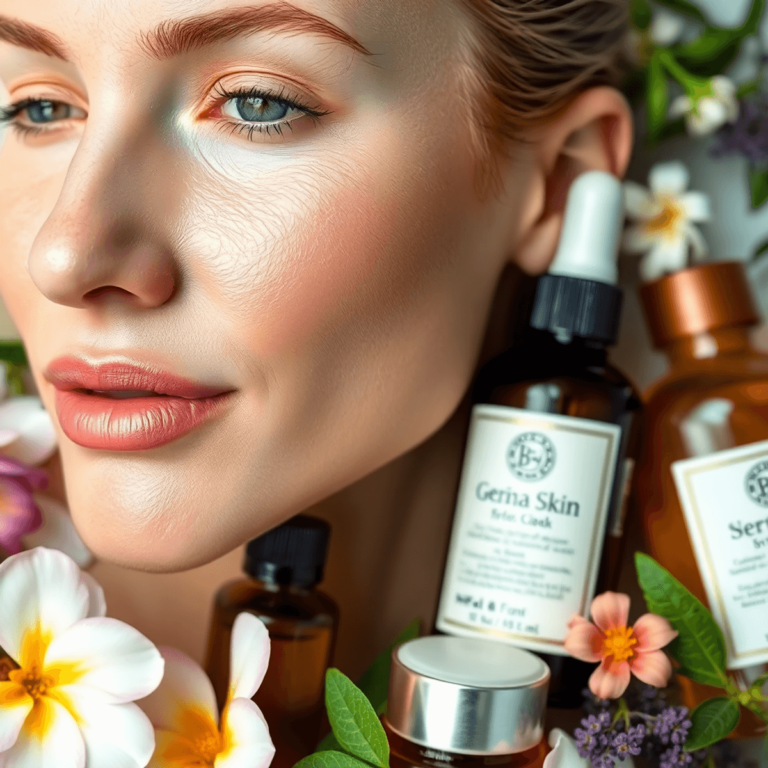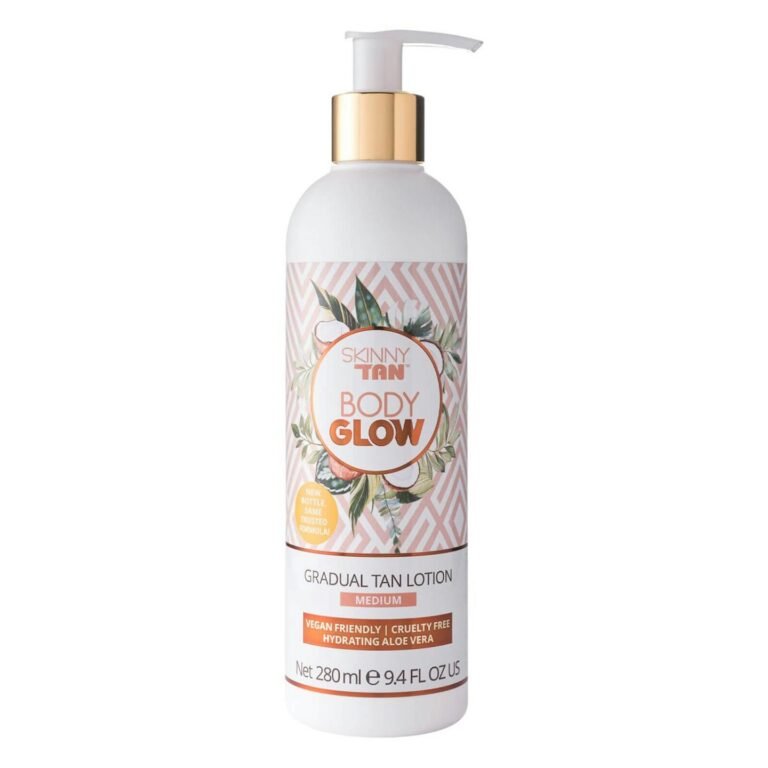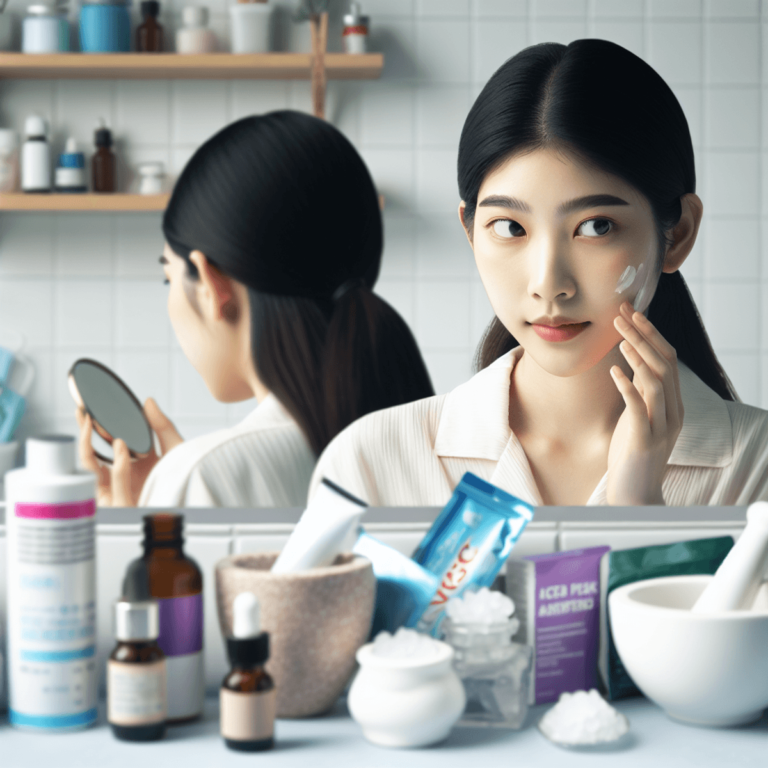How to Get Rid of a Cystic Pimple
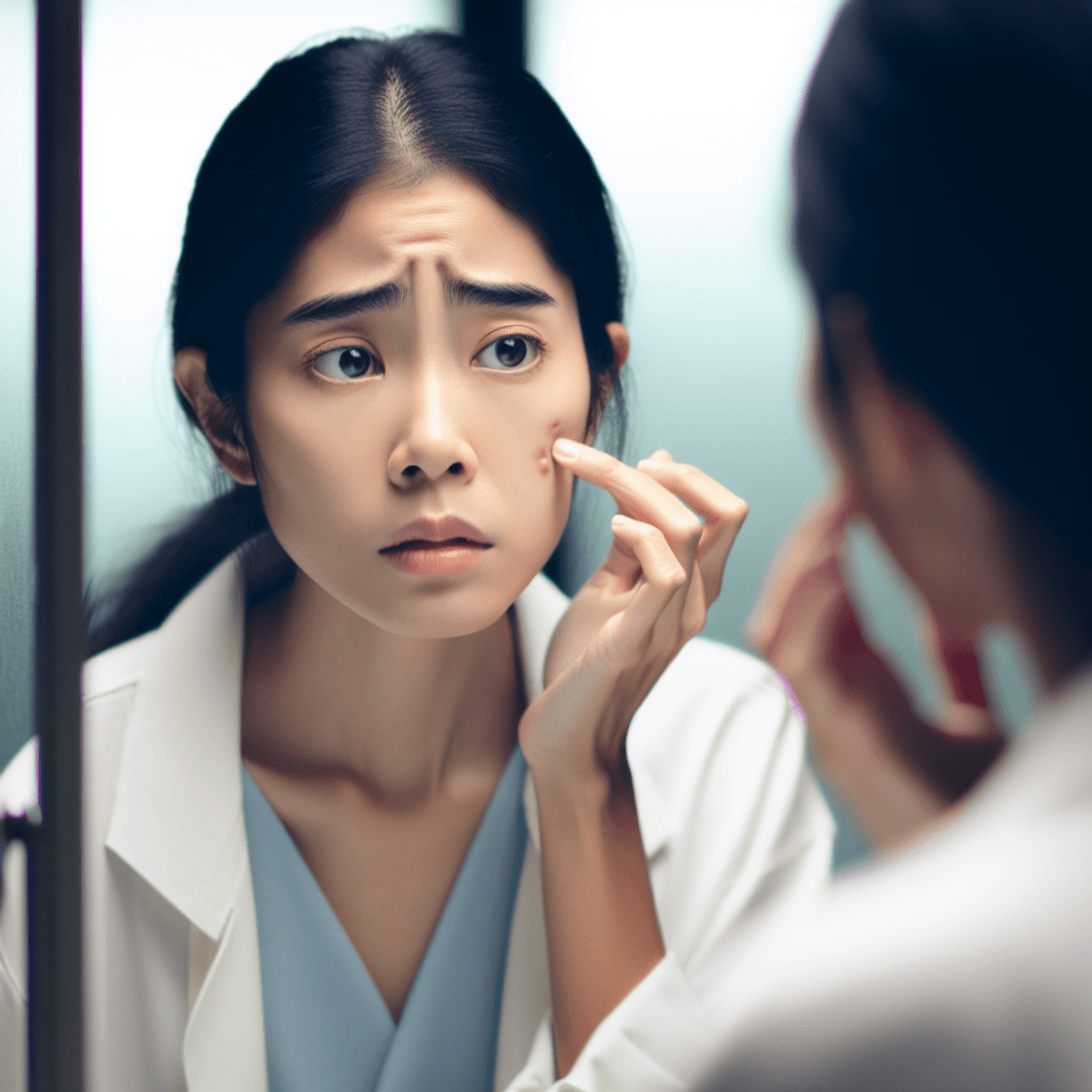
Introduction
Cystic pimples are a severe form of acne that can cause significant pain and discomfort. These large, painful bumps form deep under the skin and are often resistant to typical over-the-counter treatments. The condition not only affects your physical appearance but can also take a toll on your self-esteem and mental well-being.
Key takeaway: Effectively managing cystic pimples requires a combination of immediate treatments, home remedies, and professional interventions.
In this article, you’ll learn:
- How to identify and understand cystic pimples
- Immediate steps you can take to treat them
- Home remedies that can aid in healing
- Do’s and Don’ts for managing cystic pimples
- When it’s time to seek professional help
- Preventative measures to avoid future breakouts
- The psychological impact of cystic acne and coping strategies
You’ll gain a complete understanding of how to get rid of a cystic pimple and maintain healthier skin.
Understanding Cystic Pimples
Definition and Characteristics
Cystic pimples, a severe form of acne, show up as large, painful bumps that develop deep under the skin. Unlike typical acne, cystic acne lasts longer and can cause significant discomfort and potential scarring. These cysts are filled with pus and can often feel like soft, fluid-filled lumps beneath the skin’s surface. For a deeper insight into what cystic acne entails, you might find this comprehensive guide helpful.
Differences from Other Types of Acne
Understanding the differences between cystic pimples and other types of acne is crucial for effective treatment. While common acne types like whiteheads and blackheads are surface-level issues caused by clogged pores, cystic pimples form deeper within the skin. This depth makes them more challenging to treat and prone to leaving scars.
- Whiteheads: Closed comedones that appear as small, white bumps.
- Blackheads: Open comedones with a dark surface due to oxidation.
- Pustules: Inflamed pimples filled with pus but not as deep as cysts.
- Nodules: Hard lumps under the skin, similar to cysts but without pus.
Causes
Cystic acne results from a combination of factors:
- Blocked Pores: Excess oil (sebum) production leads to blocked hair follicles.
- Bacterial Infection: Propionibacterium acnes bacteria can infect clogged pores.
- Hormonal Fluctuations: Hormonal changes during puberty, menstruation, or stress can worsen oil production.
These underlying causes highlight why it’s essential to approach treatment holistically. For more information on how these factors contribute to acne development, you can refer to this detailed resource.
Symptoms
Identifying symptoms early can lead to faster intervention:
- Painful Bumps: Cystic pimples hurt more than other types.
- Inflammation: Redness and swelling around the affected area.
- Prolonged Healing Process: These pimples take longer to heal, often weeks or months.
Recognizing these symptoms helps you tell the difference between regular acne flare-ups and cystic breakouts. This understanding guides your approach on how to get rid of pimples on face effectively.
By grasping the core aspects of cystic acne—its definition, differences from other acne types, causes, and symptoms—you lay the groundwork for targeted treatment strategies. The next sections will talk about immediate treatments and home remedies, offering practical solutions for managing this persistent skin issue.
Immediate Steps to Treat Cystic Pimples
Effectively managing cystic pimples starts with immediate treatment and home remedies. Key steps include gentle cleansing, applying ice to reduce swelling, and using appropriate topical treatments.
Importance of Gentle Cleansing
Cleansing the skin gently is crucial in treating cystic pimples. Using harsh cleansers can irritate the skin, exacerbating inflammation and prolonging healing. Opt for cleansers designed for sensitive skin:
- Cetaphil Gentle Skin Cleanser: Non-irritating and soap-free, suitable for daily use.
- La Roche-Posay Toleriane Hydrating Gentle Cleanser: Fragrance-free, maintains the skin’s natural moisture barrier.
- Neutrogena Ultra Gentle Daily Cleanser: Hypoallergenic and non-comedogenic, ideal for sensitive skin types.
How to Apply Ice Effectively
Applying ice can provide quick relief from swelling associated with cystic pimples. Here’s how you can do it effectively:
- Wrap a few ice cubes in a clean cloth or use an ice pack.
- Apply the wrapped ice to the affected area for 5-10 minutes.
- Remove the ice for 10 minutes, then reapply if necessary.
Repeat this process several times a day to reduce inflammation and pain.
Overview of Topical Treatments
Topical treatments play a significant role in managing cystic pimples by targeting bacteria, reducing oil production, and promoting cell turnover. Key ingredients to look for include:
Benzoyl Peroxide
Benefits: Kills acne-causing bacteria (P. acnes), reduces inflammation.
Usage: Apply a thin layer to the pimple once or twice daily.
Recommendation: Clean & Clear Persa-Gel 10—contains 10% benzoyl peroxide.
Salicylic Acid
Benefits: Exfoliates dead skin cells, helps unclog pores.
Usage: Use as directed on the product label, usually once daily.
Recommendation: Paula’s Choice Skin Perfecting 2% BHA Liquid Exfoliant—effective in reducing breakouts.
Azelaic Acid
Benefits: Antibacterial properties, reduces swelling and redness.
Usage: Apply twice daily after cleansing.
Recommendation: The Ordinary Azelaic Acid Suspension 10%—helps improve skin texture while treating acne.
Incorporating these steps into your skincare routine can significantly impact how quickly you see improvement in cystic pimples. By focusing on gentle cleansing, effective use of ice, and proper topical treatments, you can manage these painful bumps more efficiently.
Home Remedies for Healing Cystic Pimples
Natural treatments can be effective in managing cystic pimples. Understanding how to get rid of a cystic pimple using home remedies is essential for those looking to avoid harsh chemicals.
Warm Compress Method
Applying a warm compress is one of the most common methods for bringing a pimple to the surface.
- Technique: Soak a clean cloth in hot water, wring it out, and then apply it to the affected area.
- Frequency: Use this method for 10-15 minutes, several times a day.
The warmth helps to soften the skin and bring the pus closer to the surface, making it easier for the pimple to drain naturally. This can reduce both pain and inflammation.
Tea Tree Oil and Honey as Natural Antibacterial Agents
Tea tree oil and honey are known for their antibacterial properties, which can be particularly useful in treating cystic pimples.
- Tea Tree Oil: Dilute tea tree oil with a carrier oil (like coconut oil) before applying it directly to the pimple. This prevents irritation and maximizes its antibacterial effects.
- Honey: Apply raw honey directly to the pimple. Honey’s natural antiseptic properties help reduce infection and promote healing.
These natural treatments provide an alternative to over-the-counter products, especially for those with sensitive skin.
Role of Hydration and Diet Changes
Maintaining proper hydration and making dietary adjustments can also impact your skin health significantly.
- Hydration: Drinking plenty of water keeps your skin hydrated and helps flush out toxins that could contribute to breakouts. Aim for at least 8 glasses of water daily.
“Staying hydrated is key to maintaining healthy skin.”
- Diet Changes: Certain foods may trigger breakouts. Reducing dairy intake, avoiding high-glycemic foods (like sugary snacks), and incorporating more fruits and vegetables into your diet can make a notable difference in managing cystic acne.
Identifying trigger foods through an elimination diet can help you pinpoint which items might be causing flare-ups.
By adopting these home remedies, you can effectively manage cystic pimples without resorting to aggressive treatments. In addition, these remedies may also prove beneficial in treating other skin issues like vaginal boils or conditions such as rosacea, which also require gentle care.
Do’s and Don’ts in Managing Cystic Pimples
Do’s:
- Maintain a Consistent Skincare Routine: Using non-comedogenic products is crucial for preventing clogged pores. Look for labels that specifically state “non-comedogenic” to ensure the products won’t contribute to acne formation.
- Gentle Cleansing: Cleanse your face twice daily with a mild, alcohol-free cleanser. This helps remove dirt, oil, and bacteria without irritating your skin.
- Hydration: Keep your skin well-hydrated using a non-comedogenic moisturizer. Proper hydration supports skin healing and can reduce the likelihood of future breakouts.
- Sun Protection: Apply sunscreen daily. Sun exposure can worsen acne and lead to scarring. Choose a sunscreen that is oil-free and designed for acne-prone skin.
Don’ts:
- Avoid Squeezing or Popping Pimples: It might be tempting, but squeezing or popping cystic pimples can push bacteria deeper into the skin, leading to further inflammation and potential scarring.
- Steer Clear of Harsh Scrubs: Physical exfoliants can aggravate cystic pimples and cause additional irritation. Instead, opt for chemical exfoliants like salicylic acid that gently remove dead skin cells without mechanical friction.
- Limit Use of Heavy Makeup: Heavy makeup can clog pores. If you need to wear makeup, choose non-comedogenic products and ensure thorough removal at the end of the day.
- Avoid Touching Your Face Frequently: Your hands come into contact with a multitude of surfaces throughout the day. Touching your face can transfer bacteria and oils that exacerbate acne conditions.
By following these skincare tips and focusing on gentle, consistent care, you can effectively manage cystic pimples while minimizing risks of further complications.
When to Seek Professional Help
Persistent cystic pimples can be incredibly frustrating. While home remedies and over-the-counter treatments can help in many cases, there are situations where professional intervention becomes necessary.
Signs You Should See a Dermatologist
Recognizing the right time to consult a professional is crucial. Here are some indicators that suggest it’s time to seek help from a dermatologist:
- Persistent Cystic Pimples: If you’ve been diligently following a skincare routine and using recommended treatments but still see no improvement, it’s time to consult a dermatologist.
- Development of Multiple Cysts: Experiencing multiple cysts simultaneously or frequently is another red flag that warrants professional attention.
- Increased Severity: If your cystic pimples are becoming larger, more painful, or more inflamed despite your best efforts, seeking medical advice is crucial. These may even turn into blind pimples, which require specialized care.
- Scarring: Noticeable scarring from previous breakouts can indicate deeper skin issues that need specialized care.
Overview of Professional Treatment Options
Dermatologists have access to advanced treatments that can provide faster and more effective relief from cystic acne. Here’s a look at some of the options:
1. Oral Antibiotics
Oral antibiotics like doxycycline and minocycline are often prescribed to reduce inflammation and bacterial infection. These medications target the bacteria Propionibacterium acnes, which contributes to the formation of cystic pimples.
2. Prescription-Strength Topical Medications
Topical treatments such as retinoids (e.g., tretinoin) can be more potent than over-the-counter options. These creams and gels help unclog pores and promote cell turnover, reducing the occurrence of cysts.
3. Steroid Injections
For particularly large or painful cysts, dermatologists may recommend corticosteroid injections. This treatment reduces inflammation quickly and helps flatten the pimple within a few days. It’s particularly useful for emergency situations when you need immediate relief.
4. Isotretinoin
Previously known as Accutane, isotretinoin is a powerful oral medication reserved for severe cases of hormonal acne that don’t respond to other treatments. It works by shrinking sebaceous glands and reducing oil production, offering long-term remission for many users. However, it comes with potential side effects and requires careful monitoring by a healthcare professional.
Combining Treatments for Optimal Results
A tailored approach combining several treatments might be necessary for severe cases. For example:
- Pairing oral antibiotics with topical retinoids can enhance effectiveness.
- Combining steroid injections with other therapies offers quick relief while addressing underlying issues.
Professional intervention ensures you receive a comprehensive treatment plan tailored to your specific needs, maximizing your chances of achieving clear skin.
Understanding when to seek help from a dermatologist is essential in managing stubborn cystic acne effectively. By recognizing the signs and exploring advanced treatment options such as those detailed in this Medical News Today article, you can take proactive steps towards healthier skin.
Preventative Measures Against Cystic Pimples
Prevention strategies play a crucial role in managing and reducing the occurrence of cystic pimples. Implementing effective daily skincare routines, making mindful makeup choices, and managing dietary factors can significantly decrease breakouts.
Daily Skincare Routine Essentials
A consistent and gentle skincare routine is essential for preventing cystic pimples. Key elements include:
- Cleansing Frequency: Cleanse your face twice a day—morning and night—with a mild, non-comedogenic cleanser. Over-washing can strip the skin of natural oils, leading to increased oil production and potential breakouts.
- Product Recommendations: Opt for cleansers containing salicylic acid or benzoyl peroxide, as these ingredients help to keep pores clear. Some popular options include:
- Cetaphil Daily Facial Cleanser
- Neutrogena Oil-Free Acne Wash
- La Roche-Posay Effaclar Medicated Gel Cleanser
Makeup Choices That Minimize Breakouts
Choosing the right makeup products is vital in preventing cystic pimples. Here’s what to consider:
- Non-Comedogenic Products: Always select makeup labeled “non-comedogenic,” meaning it won’t clog your pores. Brands known for their non-comedogenic ranges include:
- bareMinerals
- Clinique
- Tarte Cosmetics
- Oil-Free Formulas: Opt for oil-free foundations and concealers to reduce excess oil on the skin.
- Regular Cleaning of Applicators: Clean your makeup brushes and sponges regularly to prevent bacterial build-up that can lead to breakouts.
Managing Dietary Factors
Dietary changes can have a significant impact on your skin health. Identifying and managing food triggers is an effective strategy:
- Identifying Trigger Foods: Common foods that may exacerbate acne include:
- Dairy products
- High-glycemic foods such as white bread, sugary snacks, and sodas
- Processed foods high in unhealthy fats
- Healthy Alternatives: Incorporate more fruits, vegetables, whole grains, and lean proteins into your meals. Foods rich in omega-3 fatty acids like salmon and walnuts are beneficial for skin health.
Implementing these prevention strategies diligently can help you manage cystic pimples effectively before they even appear. Through lifestyle changes and mindful choices in daily routines, you can maintain clearer skin and reduce the frequency of breakouts.
The Psychological Impact of Cystic Acne
Cystic acne can have a significant impact on mental health, often leading to self-image issues. Individuals with cystic acne may experience a range of negative emotions, from embarrassment and frustration to anxiety and depression. These emotional responses can result in lowered self-esteem and a reluctance to engage in social activities.
Emotional Toll on Self-Esteem and Well-Being
Cystic acne is not just a skin condition; it affects how you see yourself and how you think others see you. The painful, inflamed bumps are hard to hide, making you feel constantly self-conscious. This can lead to:
- Avoiding social interactions: You might skip social events or gatherings to avoid being seen.
- Negative self-talk: Constantly criticizing your appearance can become a habit, further damaging your mental health.
- Isolation: Feeling different or unattractive may cause you to withdraw from friends and family.
Importance of Seeking Support
Addressing the psychological effects of cystic acne is as crucial as treating the physical symptoms. Seeking support from professionals or communities can provide much-needed relief:
- Consulting mental health professionals: Therapists and counselors can offer strategies for coping with the emotional strain.
- Joining support groups: Connecting with others who face similar challenges can help you feel understood and less isolated.
“Talking about my cystic acne in therapy was eye-opening. It wasn’t just about the pimples; it was about how I saw myself,” shares a patient who found relief through counseling.
Coping Mechanisms
To reduce the psychological impact:
- Practice self-care routines that prioritize both skin health and mental well-being.
- Engage in mindfulness exercises such as meditation or yoga to reduce stress.
- Educate yourself about cystic acne to understand that it’s a medical condition, not a reflection of your worth.
Understanding that cystic acne affects both your skin and your mind is essential. Taking steps to maintain good mental health can make managing this condition more bearable.
Conclusion
Effectively managing cystic pimples involves a combination of immediate treatments, home remedies, and professional interventions. By following a holistic approach, you can minimize the discomfort and appearance of these persistent blemishes.
Key Points to Remember:
- Immediate Treatments: Use gentle cleansers, apply ice to reduce swelling, and consider topical treatments like benzoyl peroxide or salicylic acid.
- Home Remedies: Employ warm compresses, tea tree oil, and honey as natural antibacterial agents. Maintain proper hydration and adjust your diet to support skin health.
- Do’s and Don’ts: Stick to non-comedogenic skincare products and avoid squeezing or popping pimples.
- Professional Help: Seek dermatological advice if home remedies fail or cystic pimples persist. Options include oral antibiotics, prescription-strength topicals, steroid injections, and isotretinoin for severe cases.
- Preventative Measures: Establish a consistent skincare routine, choose makeup wisely, and manage dietary factors.
Addressing cystic pimples requires patience and persistence. Embrace a comprehensive strategy that combines self-care with professional guidance when necessary. This balanced approach can significantly improve your skin’s condition and boost your confidence.
FAQs (Frequently Asked Questions)
What are cystic pimples and how do they differ from other types of acne?
Cystic pimples are a severe form of acne characterized by painful, inflamed bumps that form deep within the skin. Unlike other types of acne, they are larger, more painful, and can take longer to heal due to their nature of being filled with pus and occurring in deeper layers of the skin.
What immediate steps can I take to treat a cystic pimple?
To treat a cystic pimple immediately, you should gently cleanse the area with a recommended cleanser for sensitive skin. Applying ice can help reduce swelling, and using topical treatments like benzoyl peroxide or salicylic acid can aid in reducing inflammation and bacteria.
Are there effective home remedies for healing cystic pimples?
Yes, effective home remedies include applying warm compresses to bring the pimple to the surface, using tea tree oil and honey for their antibacterial properties, and ensuring proper hydration while making dietary changes to manage breakouts.
What are some do’s and don’ts when managing cystic pimples?
Do maintain a consistent skincare routine with non-comedogenic products. Avoid squeezing or popping the pimples and steer clear of harsh scrubs that can irritate the skin further.
When should I seek professional help for cystic pimples?
You should consult a dermatologist if you experience persistent cystic pimples despite home care or if multiple cysts develop. Professional treatment options may include oral antibiotics, prescription-strength topical medications, steroid injections for large cysts, or isotretinoin for hormonal acne.
How can I prevent cystic pimples from occurring?
Preventative measures include establishing a daily skincare routine with appropriate cleansing frequency and product choices, opting for non-comedogenic makeup, and managing dietary factors by identifying foods that may trigger breakouts.


